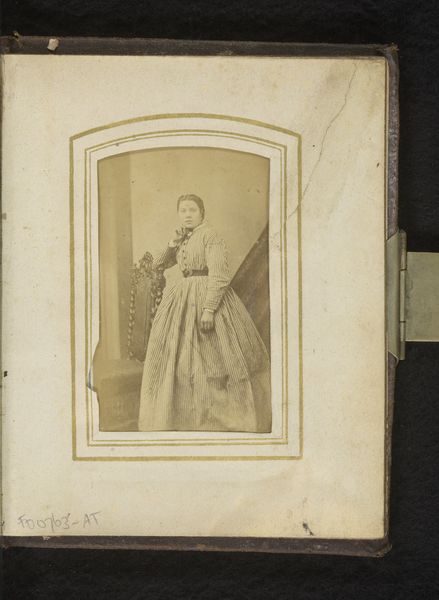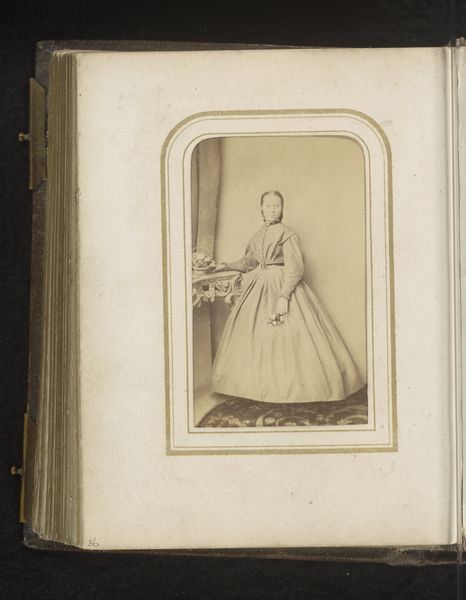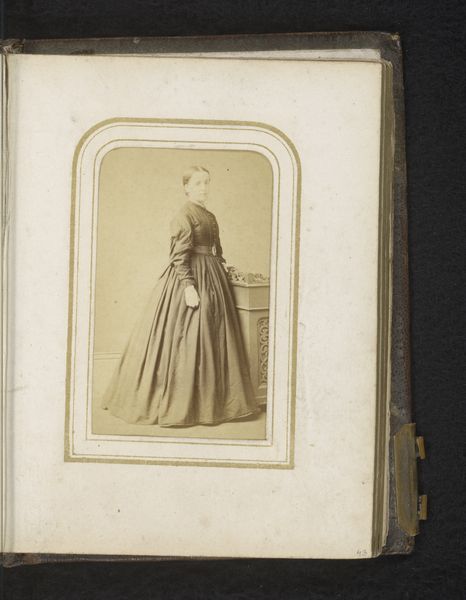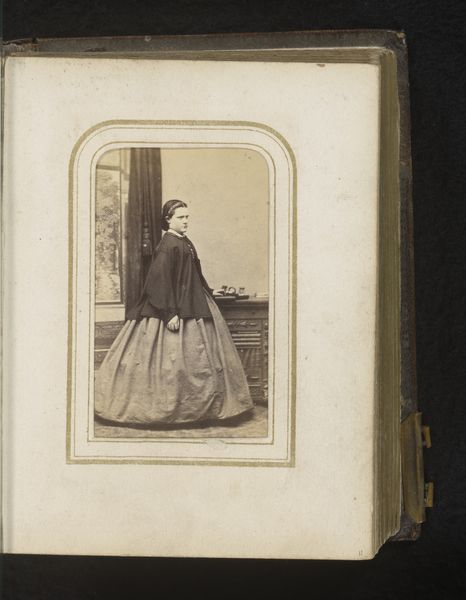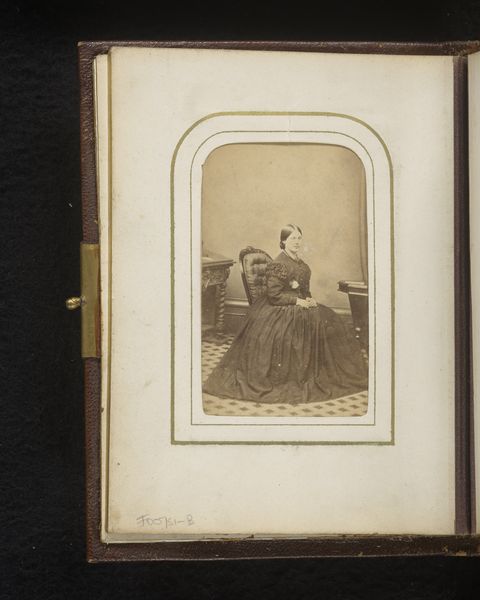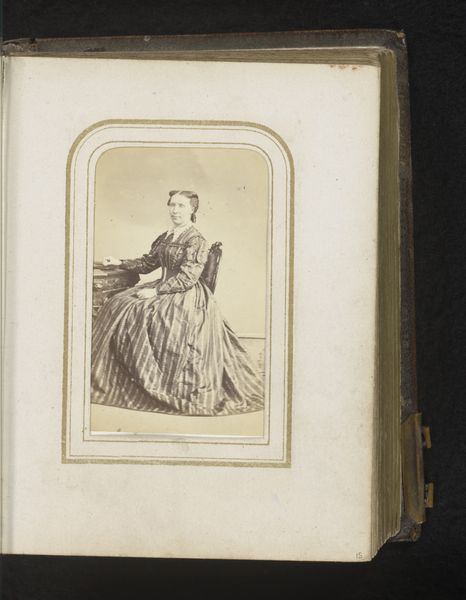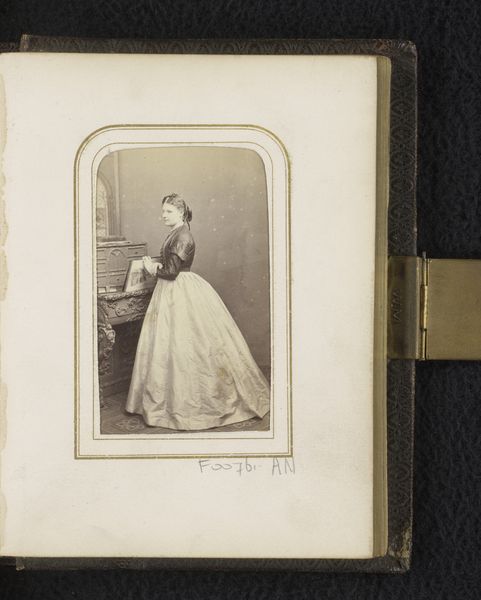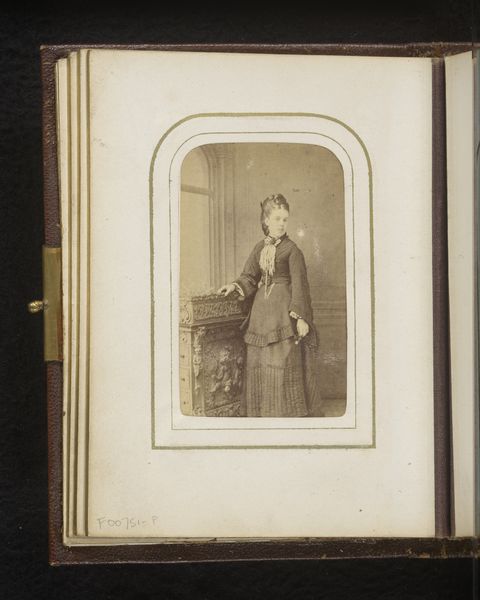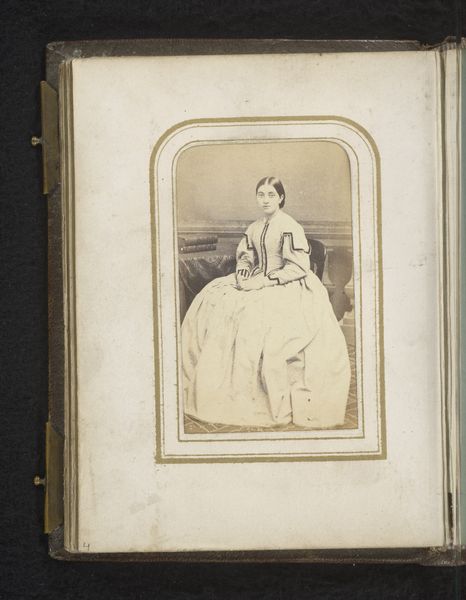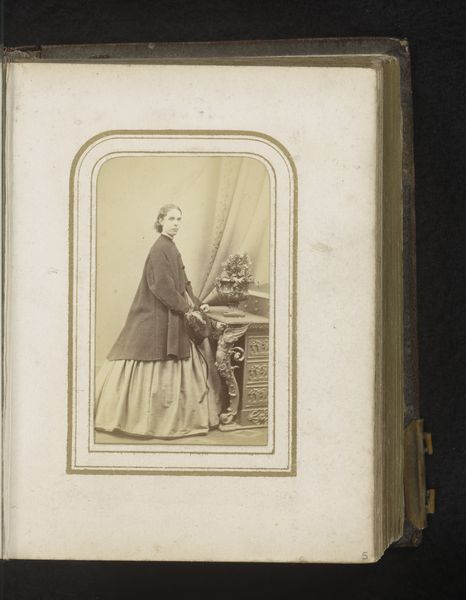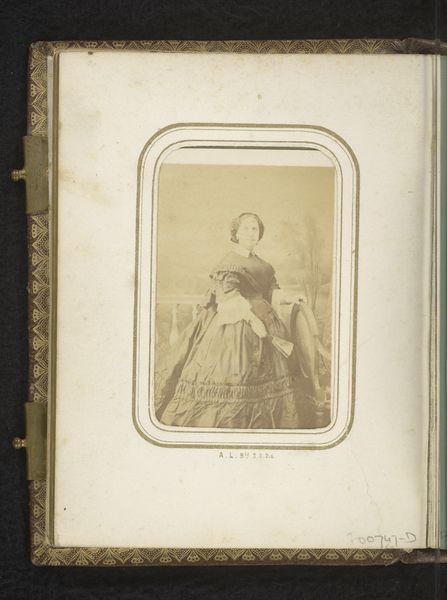
photography, albumen-print
#
portrait
#
photography
#
genre-painting
#
albumen-print
#
realism
Dimensions: height 84 mm, width 50 mm
Copyright: Rijks Museum: Open Domain
Editor: Here we have a piece called "Portret van een vrouw, staand bij een stoel," or "Portrait of a Woman Standing by a Chair." It's an albumen print from somewhere between 1860 and 1880, author unknown. What strikes me is how much detail they managed to capture with such an early photographic process. What do you notice when you look at this image? Curator: Immediately, I think about the means of production and the social context this photograph exists within. This is an albumen print – which involved coating paper with egg white to create a light-sensitive surface. Think of the labor involved! Not just in the photographic process itself, but in the farming and distribution of eggs at the time. It speaks to a particular moment of industrial development and its impact on even supposedly 'high' art forms. Does that resonate with you? Editor: Absolutely. Thinking about eggs as a core material…it's strangely grounding. Does that challenge the traditional separation of photography from other crafts in any way, then? Curator: Precisely. Early photography relied so heavily on chemical processes and material preparation; blurring lines between artist, technician, and the wider network of industries supplying these crucial ingredients. What statement is made, or even accidentally captured, with the availability and choice of materials? Are these processes gendered, and, if so, does it subtly reinforce social power? The availability and the choices tell a specific history. Editor: That's a fascinating perspective, thinking about photography less as pure artistry and more as a product of industrial and social processes. Curator: And the albumen itself affects the image, its tonality, and its preservation, a conversation around choices in those materials as much as the pose. So what’s presented, and why. Food for thought! Editor: Definitely given me a lot to think about, especially about labor and material in photography, thank you. Curator: My pleasure, let’s think about how photography shifted the artist's role into different processes now.
Comments
No comments
Be the first to comment and join the conversation on the ultimate creative platform.
